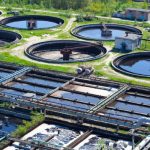-
-
Call for inquiry
-
Port Trade Center, SMCHS
Karachi, Pakistan

What is Wastewater Treatment? Understanding the Essence of Wastewater Treatment
Wastewater treatment is a critical and often underappreciated aspect of modern society. It is a complex and multifaceted process that plays a pivotal role in maintaining the health of our environment, safeguarding public health, and conserving precious water resources. In this article, we will delve into the intricacies of wastewater treatment, exploring its significance, processes, and the far-reaching implications it has on our world.
The Significance of Wastewater Treatment
Wastewater treatment is an essential practice for various reasons, each of which contributes to the overall well-being of our society:
- Environmental Preservation: Wastewater, if left untreated, can contain harmful pollutants and contaminants that pose a significant threat to aquatic ecosystems and terrestrial environments. Effective treatment helps remove these impurities, reducing the impact on our natural surroundings.
- Public Health Protection: Inadequate wastewater treatment can result in the spread of diseases and pathogens. By treating wastewater, we ensure that waterborne diseases are prevented, safeguarding the health of our communities.
- Resource Conservation: Water is a finite and invaluable resource. Wastewater treatment allows us to recycle and reuse water, reducing the strain on freshwater sources and promoting sustainable water management.
Wastewater Treatment Processes
Wastewater treatment is not a one-size-fits-all solution; rather, it comprises a series of interconnected processes, each designed to address specific aspects of wastewater purification. The primary treatment processes include:
- Screening: Large objects and debris are removed from the wastewater through mechanical screens. This initial step helps protect downstream equipment from damage.
- Primary Treatment: In this phase, solid particles that settle at the bottom of treatment tanks are removed. The resulting sludge is typically processed separately.
- Secondary Treatment: Biological treatment processes are employed to remove dissolved and suspended organic matter. This is achieved through the use of microorganisms that consume organic pollutants.
- Tertiary Treatment: This advanced phase further purifies the water by removing remaining contaminants, such as nutrients (nitrogen and phosphorus), pathogens, and trace chemicals. Tertiary treatment may include chemical coagulation, filtration, or other specialized techniques.
- Disinfection: To ensure the removal of harmful microorganisms, disinfection processes like chlorination, ultraviolet (UV) irradiation, or ozone treatment are applied.
Impacts and Future Considerations
Wastewater treatment is an ever-evolving field, with ongoing efforts to enhance its efficiency and sustainability. Several trends and considerations are shaping the future of wastewater treatment:
- Climate Change Resilience: Climate change can lead to increased precipitation and the potential for more extreme weather events. Wastewater treatment systems must adapt to these changing conditions to prevent overflows and protect water quality.
- Resource Recovery: There is a growing emphasis on recovering valuable resources from wastewater, such as energy, nutrients, and bio-based products. Innovations in resource recovery are reducing the environmental footprint of treatment processes.
- Smart Technologies: The integration of automation, data analytics, and sensor technologies is revolutionizing wastewater treatment operations. These advancements enhance efficiency, reduce energy consumption, and improve overall performance.
- Sustainable Treatment Methods: Green and nature-based solutions, such as constructed wetlands and natural filtration systems, are being explored as more environmentally friendly alternatives to traditional treatment methods.


